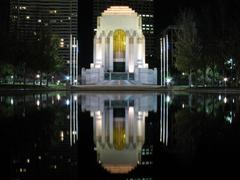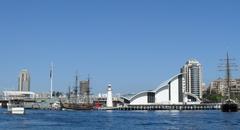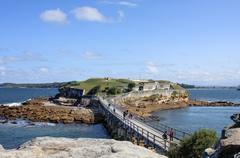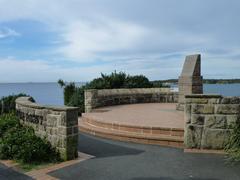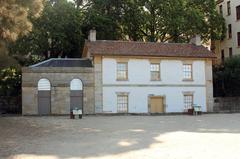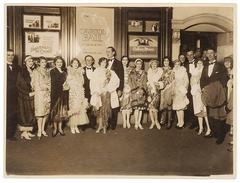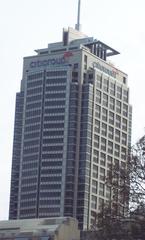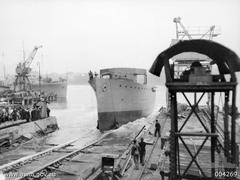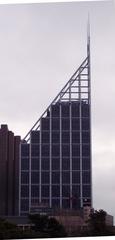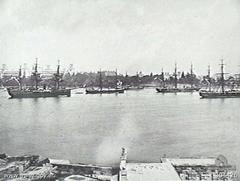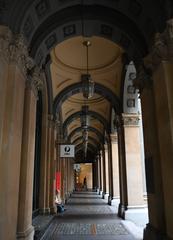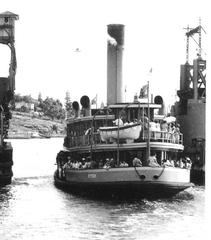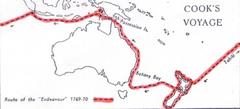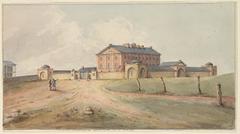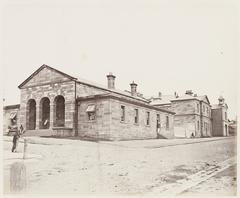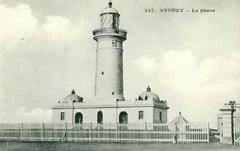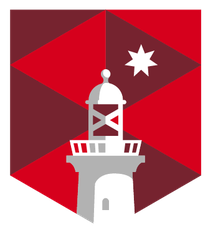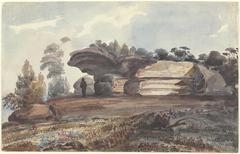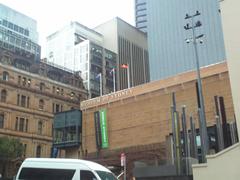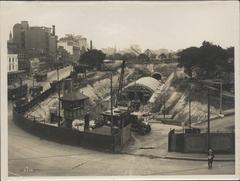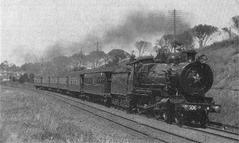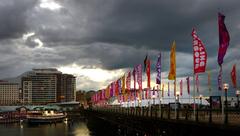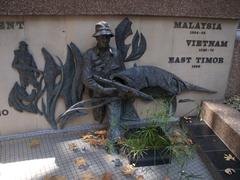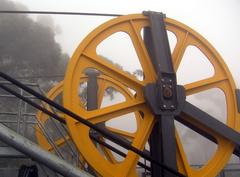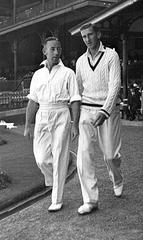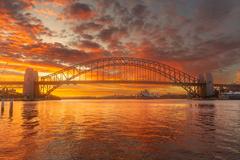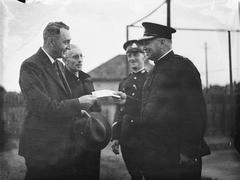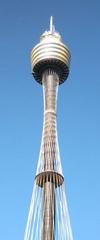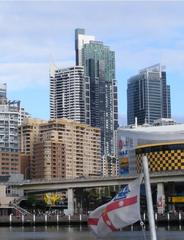Sydney Harbour National Park Visitor Guide
Publication Date: 19/07/2024
Introduction to Sydney Harbour National Park
Sydney Harbour National Park is a captivating destination that stands as a testament to Australia’s rich natural, historical, and cultural heritage. Nestled in the heart of Sydney, this park offers an exquisite blend of lush landscapes, historical sites, and breathtaking vistas. Visitors can explore ancient Aboriginal rock engravings, remnants of early European settlements, and historic military fortifications, all set against the backdrop of Sydney’s iconic harbour. Established in 1975, the park spans various islands, headlands, and foreshore areas, serving as a sanctuary for native flora and fauna and a repository of the nation’s heritage. The park’s significance is further amplified by its role in ongoing conservation efforts, aimed at preserving its unique ecosystems and cultural landmarks for future generations. This comprehensive guide will delve into the park’s multifaceted history, visitor information, and tips for making the most of your visit, ensuring an enriching and memorable experience.
Contents
- Introduction
- History of Sydney Harbour National Park
- Indigenous Heritage
- European Discovery and Settlement
- Development of the Park
- Military History
- Conservation Efforts
- Cultural Significance
- Visitor Information
- Visiting Hours and Tickets
- Access and Transportation
- Guided Tours
- Special Events
- Safety and Regulations
- FAQ
- Conclusion
History of Sydney Harbour National Park
Indigenous Heritage
Sydney Harbour National Park holds profound significance for the Indigenous peoples of Australia, particularly the Gadigal, Cammeraygal, and other Eora Nation clans. The area has been inhabited for thousands of years, with evidence of Aboriginal presence dating back at least 20,000 years. The park is rich in Aboriginal sites, including rock engravings, middens, and art sites, which provide a glimpse into the spiritual and cultural life of the Indigenous communities. These sites are protected and respected, offering visitors a chance to understand the deep connection between the land and its original inhabitants. For more information on the Indigenous heritage of the area, visit the NSW National Parks website.
European Discovery and Settlement
The history of Sydney Harbour National Park is closely tied to the European discovery and subsequent colonization of Australia. In 1770, Captain James Cook charted the east coast of Australia, including the area now known as Sydney Harbour. However, it was not until 1788 that the First Fleet, led by Captain Arthur Phillip, arrived and established the first European settlement in Australia at Port Jackson, which includes Sydney Harbour.
The arrival of the First Fleet marked the beginning of significant changes for the Indigenous populations, as European settlers began to clear land, build structures, and introduce new species. The early colonial period saw the construction of many of the historic buildings and fortifications that still stand today within the park, such as the Georges Head Battery, built in the 19th century to protect the harbour from potential invaders.
Development of the Park
The concept of preserving parts of Sydney Harbour for public use and enjoyment dates back to the late 19th and early 20th centuries. In 1879, the New South Wales government established the Sydney Harbour Trust, which played a crucial role in managing and protecting the harbour’s foreshores. The trust’s efforts led to the creation of several public reserves and parks around the harbour.
Sydney Harbour National Park was officially established in 1975, encompassing various islands, headlands, and foreshore areas around the harbour. The park was created to protect the natural and cultural heritage of the area, providing a sanctuary for native flora and fauna and preserving historic sites for future generations. The establishment of the park was a significant milestone in the conservation movement in Australia, reflecting a growing awareness of the need to protect natural landscapes and cultural heritage.
Military History
Sydney Harbour has played a strategic military role throughout its history, particularly during the 19th and 20th centuries. The harbour’s fortifications, including the Middle Head Fortifications, were constructed to defend against potential threats from foreign powers. These fortifications, which include tunnels, gun emplacements, and observation posts, are now key historical attractions within the park.
During World War II, Sydney Harbour was a critical naval base for the Allied forces. The harbour was the site of the infamous Japanese midget submarine attack in 1942, which resulted in the sinking of the HMAS Kuttabul and the loss of 21 lives. Remnants of this period, such as the anti-submarine boom net and various military installations, can still be seen today, offering visitors a glimpse into the harbour’s wartime history.
Conservation Efforts
Since its establishment, Sydney Harbour National Park has been the focus of ongoing conservation efforts aimed at preserving its unique natural and cultural heritage. The park’s diverse ecosystems, including coastal heathlands, woodlands, and wetlands, provide habitat for a wide range of native species, some of which are endangered. Conservation programs within the park focus on habitat restoration, weed and pest control, and the protection of threatened species.
One notable conservation initiative is the restoration of the North Head Sanctuary, a significant ecological and cultural site within the park. The sanctuary is home to endangered species such as the Long-nosed Bandicoot and provides important habitat for migratory birds. Efforts to restore and protect North Head include habitat restoration, community engagement, and research programs aimed at understanding and mitigating threats to the area’s biodiversity.
Cultural Significance
Sydney Harbour National Park is not only a natural and historical treasure but also a cultural icon. The park’s stunning landscapes and historic sites have inspired countless artists, writers, and photographers, contributing to Australia’s cultural heritage. The park is a popular destination for both locals and tourists, offering a range of recreational activities such as bushwalking, picnicking, and sightseeing.
The park’s cultural significance is also reflected in its role as a venue for various events and celebrations. For example, the park’s vantage points provide some of the best views of Sydney’s New Year’s Eve fireworks, attracting thousands of visitors each year. Additionally, the park hosts cultural and educational programs that promote awareness and appreciation of its natural and historical values.
Visitor Information
Visiting Hours and Tickets
Sydney Harbour National Park is open year-round, but specific visiting hours may vary depending on the area. It is advisable to check the NSW National Parks website for up-to-date information on opening hours and any seasonal closures. Some areas of the park may require an entry fee, and ticket prices can also be found on the website.
Access and Transportation
The park is accessible by public transport, including ferries, buses, and trains. For detailed information on how to get there, visit the Transport NSW website.
Guided Tours
Consider joining a guided tour to learn more about the park’s history and natural features. Various tour operators offer walking tours, boat tours, and cultural experiences.
Special Events
Sydney Harbour National Park hosts a variety of special events and guided tours throughout the year. These events offer unique opportunities to explore the park’s natural beauty and historical significance. Check the park’s website or contact the visitor center for information on upcoming events and tour schedules.
Safety and Regulations
Follow all safety guidelines and park regulations, including staying on designated trails, respecting wildlife, and adhering to fire safety rules. For more information on park regulations, visit the NSW National Parks website.
FAQ
Q: What are the visiting hours for Sydney Harbour National Park? A: The park is open year-round, but specific visiting hours may vary. Check the NSW National Parks website for up-to-date information.
Q: Are there any entry fees for Sydney Harbour National Park? A: Some areas of the park may require an entry fee. Visit the NSW National Parks website for detailed information on fees and permits.
Q: How can I get to Sydney Harbour National Park? A: The park is accessible by public transport, including ferries, buses, and trains. For more details, visit the Transport NSW website.
Conclusion
By understanding the rich history and significance of Sydney Harbour National Park, visitors can gain a deeper appreciation of this remarkable destination and contribute to its ongoing preservation. For more updates and information, consider downloading the Audiala mobile app, checking out related posts, or following us on social media.
Sources and Further Reading
- NSW National Parks and Wildlife Service. (n.d.). Sydney Harbour National Park. Retrieved from https://www.nationalparks.nsw.gov.au/visit-a-park/parks/sydney-harbour-national-park
- Sydney Harbour Federation Trust. (n.d.). Georges Head. Retrieved from https://www.harbourtrust.gov.au/en/see-and-do/georges-head/
- Sydney Harbour Federation Trust. (n.d.). Middle Head. Retrieved from https://www.harbourtrust.gov.au/en/see-and-do/middle-head/
- Sydney Harbour Federation Trust. (n.d.). North Head. Retrieved from https://www.harbourtrust.gov.au/en/see-and-do/north-head/
- Transport NSW. (n.d.). Retrieved from https://transportnsw.info/
- Sydney Harbour Kayaks. (n.d.). Retrieved from https://www.sydneyharbourkayaks.com.au/


